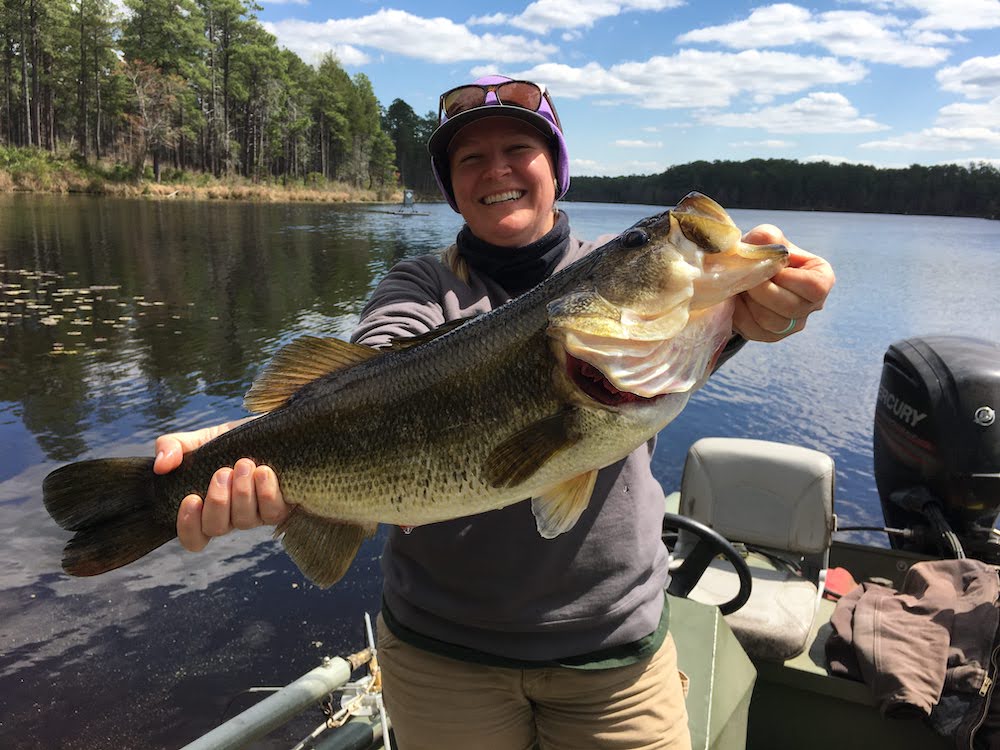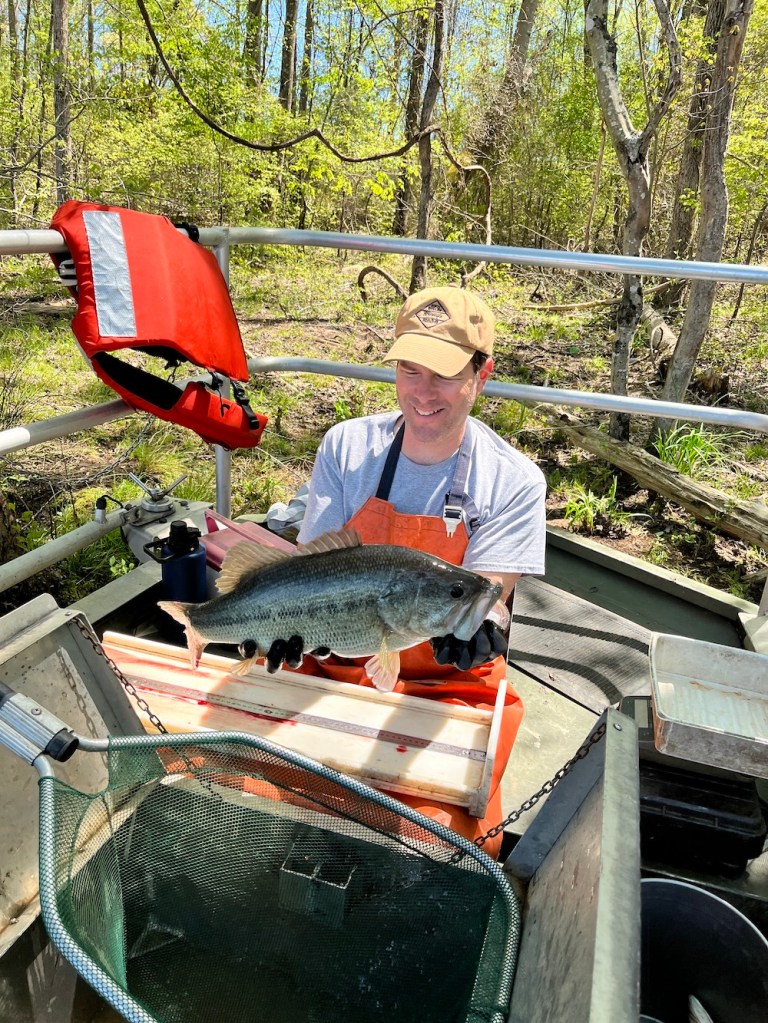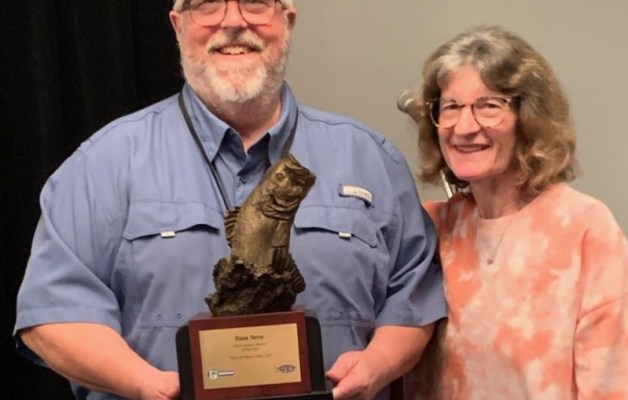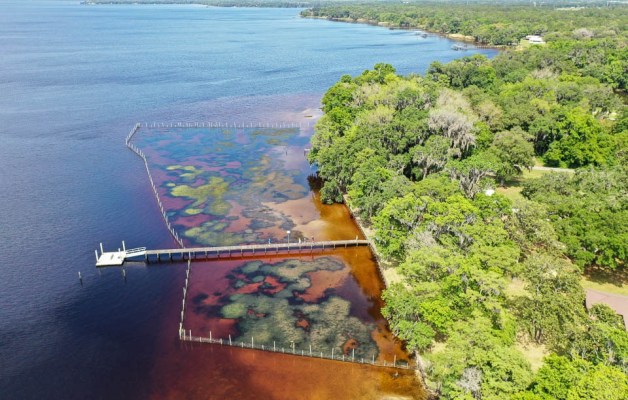
RALEIGH, N.C. – Anglers who frequent Jordan Lake, Lake Gaston and Lake Norman may be surprised next time they “reel in the big one.” The North Carolina Wildlife Resources Commission (NCWRC) is stocking a new hybrid bass species in those waters, called an F1 hybrid bass. It is a cross between largemouth bass and Florida bass. The hope is that the hybrid bass will have hybrid vigor, which means they will grow faster and larger than other bass.
“F1 hybrid bass are a new tool for fisheries managers. We hope to augment and enhance our existing bass fisheries through these stockings,” said Corey Oakley, assistant chief of NCWRC’s Inland Fisheries. “We hope these hybrids will increase opportunities for anglers to catch trophy bass where we stock them.”
The nonprofit group, Bass Anglers for NC Lakes, is partnering with NCWRC on the F1 Hybrid Bass Research Project and recently supplied the project with $30,000 to purchase more F1 hybrid bass fingerlings for additional stocking. NCWRC will need to continue to stock F1 hybrids to maintain its population as their offspring are no longer F1 hybrids and do not have hybrid vigor like their parents.
“We are so excited to partner with N.C. Wildlife on this project,” said Chuck Murray, the president of Bass Anglers for NC Lakes. “This project is unique in that anglers can contribute and make a huge difference in stocking our lakes. We believe this project will be a success and enhance our lakes for generations to come. We believe this will give every angler (young and old) a better chance at a trophy bass on any given day.”
F1 hybrid bass have been stocked by NCWRC in Lake Norman since 2021 and began being stocked at B. Everett Jordan Reservoir and Lake Gaston last summer. NCWRC staff will evaluate the F1 hybrid fingerlings for persistence, growth potential and ability to increase the overall quality and contribution of the existing bass population. They will be collecting genetic and population data from electrofishing surveys and tournament weigh-ins. Evaluations are expected to be conducted through 2030 and data will be compared across the three reservoirs, which have different levels of primary productivity, to determine future management strategies.
For more information visit:
- F1-Hybrid-Largemouth-Bass-Research-Project-2023.pdf (ncwildlife.org)
- F1 Largemouth Bass Stocking and Evaluation Program Description (ncwildlife.org)
- F1 Stocking Program Overview (ncwildlife.org)
- Stocking F1 Hybrid Largemouth Bass in Lake Norman, Jordan Lake and Lake Gaston (youtube.com)





